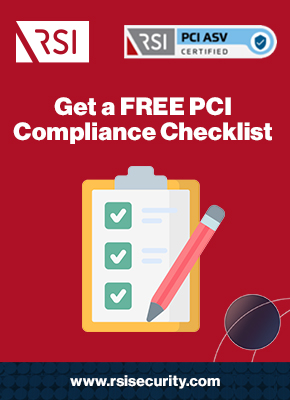The PCI DSS 4.0 compensating controls and Customized Approach are two methods to validate compliance. The former is for requirements that can’t be met, and the latter is for meeting different objectives. Organizations can use either (or both) to optimize their compliance.
Is your organization ready for PCI DSS implementation? Schedule a consultation to find out!
Compensating Controls and the Customized Approach
The Security Standards Council (SSC) of the Payment Card Industry (PCI) released version 4 of the Data Security Standard (DSS) in 2022. In it, there are two alternative methods for meeting compliance needs, the compensating controls and the Customized Approach, to choose from.
Deciding between the two alternate approaches to DSS compliance requires understanding:
- How the compensating controls power compliance when requirements can’t be met
- How the Customized Approach allows for alternative, often more effective, measures
- Which approach—or what combination of the two—is best in which security contexts
Working with a PCI DSS advisor or assessor will help your organization develop a plan for compliance, through either conventional or alternative methods, to streamline the process.
What are PCI DSS Compensating Controls?
PCI DSS 4.0 compensating controls form a method of achieving compliance for organizations that cannot meet a given PCI DSS Requirement for a legitimate technical or business reason.
For context, the PCI DSS comprises 12 Requirements, distributed across six groups. Each requirement breaks down into a number of Sections. For example, consider Requirement 1:
Requirement 1: Install and Maintain Network Security Controls (NSCs) –
- Section 1.1: Define mechanisms for installing and maintaining NSCs
- Section 1.2: Configure and maintain NSCs across system components
- Section 1.3: Restrict access to the cardholder data (CHD) environment (CDE)
- Section 1.4: Control connections between known and unknown networks
- Section 1.5: Mitigate risks to the CDE from devices on untrusted networks
Organizations that are faced with legitimate challenges or barriers to meeting any individual Requirements, Sections, or other specifications may instead utilize and document compensating controls. Controls are applied on a case-by-case basis to the sub-requirements within Sections.
To qualify for compliance validation, the controls need to satisfy the following criteria:
- Meeting the intent and rigor of the original prescribed controls
- Providing a similar level of defense as the original controls
- Being “above and beyond” other PCI DSS Requirements
- Mitigating additional risks imposed by legitimate challenges
- Addressing the specific Requirement currently and in the future
To help organizations meet these criteria, there is a worksheet in the DSS that can be used as a template for documenting compensating controls as part of any official PCI DSS assessment.
Assess your PCI compliance
Compensating Controls Benefits and Drawbacks
The biggest benefit of compensating controls is the ability to achieve PCI DSS compliance even in the face of challenges that would otherwise make it impossible. The worksheet provided within the DSS is relatively easy to follow, and some organizations who qualify for validation through Self-Assessment Questionnaire (SAQ) can fill it out without external guidance.
The most obvious drawback of compensating controls is the fact that, definitionally, they indicate a lack or gap in an organization’s ability to meet a standardized DSS requirement. That might mean that there is a vulnerability critical to CHD and other protected data, or it might speak to a generalized weakness in the organization’s cyberdefense capabilities. In many cases, it might be more beneficial to address the baseline issue or challenge rather than compensate for it.

What is the PCI DSS Customized Approach?
The Customized Approach is similar to compensating controls in that it is an alternative way to meet PCI DSS compliance requirements. However, rather than compensating for a lacking capacity to meet requirements as stated, the Customized Approach substitutes the objectives entirely. It is primarily a tool for organizations that want to use different methods to achieve greater security assurance than a specific PCI DSS prescribed control calls for as defined.
To do so, organizations document how the specific measure they use meets or exceeds the Customized Approach Objectives of a given Requirement Section. An assessor documents that and how it does, along with a risk analysis determining that it mitigates any added risk factors.
For context, consider the fuller picture of a PCI Requirement Section from above, Section 1.1:
Section 1.1, sub-requirement 1.1.1 –
- Defined Approach Requirements: All security policies identified in Requirement 1 are documented, kept up to date, operational, and known to all impacted parties.
- Customized Approach Objectives: All expectations and controls pertinent to Requirement 1 are formally defined and understood by all parties. Supporting activities are repeatable, consistent, and conform to management’s intent.
Section 1.1, sub-requirement 1.1.2 –
- Defined Approach Requirements: Roles and responsibilities regarding the activities in Requirement 1 are documented, assigned, and understood by all.
- Customized Approach Objectives: Day-to-day responsibilities for Requirement 1 are allocated, and personnel are accountable for the ongoing operation thereof.
In a Customized Approach to this particular Section, the Defined Approach portions (along with their Defined Approach Testing Procedures, not represented here) would be eschewed in favor of the more open-ended Customized Approach Objectives. An assessor would be tasked with ensuring that the organization’s selected measures meet that objective—however vague—fully.
As with compensating controls, the Customized Approach applies individually to controls.
Customized Approach Use Cases and Considerations
Unlike with compensating controls, organizations considering the Customized Approach are often in an advantageous position by default with respect to both PCI DSS compliance and security more broadly. It is not designed for organizations that can’t meet certain criteria. It instead empowers organizations to go above and beyond the scope of DSS protections.
The most common use cases for the Customized Approach are organizations with robust cyberdefense protections already in place. Larger, more mature organizations that are already meeting compliance and other security obligations may have better methods already installed for providing the same if not stronger protection for any kind of sensitive data, including CHD.
Download Free PCI Compliance Checklist
 |
However, the Customized Approach is not without challenges.
Firstly, it is not available to organizations seeking self-assessment. Organizations need to contract a Qualified Security Assessor (QSA) for a more robust audit resulting in an Attestation of Compliance (AOC) or Report on Compliance (ROC) to qualify for the Customized Approach.
And, by its nature, the Customized Approach adds depth and complexity to audits. Assessors need to justify and qualify controls’ efficacy without a universal reference point. That can make for a longer and more expensive audit process, as it introduces discretion rather than objectivity.

Which Alternative Implementation is Best?
Generally speaking, organizations are either in a position to use compensating controls or the Customized Approach for an objective—it’s not a matter of choice. If the organization cannot meet a given requirement as stated, it likely must use compensating controls. It would only be in a position to use the Customized Approach if it can meet the existing requirement in multiple ways. The DSS makes it apparent that the two cannot be used together for the same control.
So, it’s less about which one is better and more about which one is applicable.
However, organizations can make use of both compensating controls and the customized approach in their overall audit, albeit not for the same sub-requirements. They can even use both assessment methods within the same Section. For example, if an organization could document a legitimate reason that Requirement 1.1.1 could not be met, then compensating controls could be used to meet it. And the same organization could also utilize the Customized Approach for Requirement 1.1.2. In theory, each requirement could utilize one or the other.
Streamline Your PCI DSS Compliance Today
For organizations seeking PCI compliance, it can be difficult to meet the exact specifications of every single DSS Requirement and sub-requirement. Organizations with legitimate barriers to meeting them as stated can utilize compensating controls instead, and organizations with more mature cyberdefenses can opt for alternative superior controls using the Customized Approach.
RSI Security has helped countless organizations prepare for and achieve PCI compliance. We know that the right way is the only way to keep data safe, and we understand the value provided by these alternative methods to assessment and validation. We’ll help you choose the best one.
To learn more about the PCI DSS 4.0 compensating controls, Customized Approach, and what options your organization has to achieve and maintain compliance, contact RSI Security today!
Download Free PCI DSS Compliance Checklist
 |
